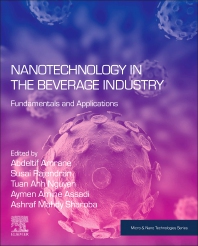Ingredient Spotlight
Beverage-makers work to deliver convenient, nutritional protein options
Health and wellness influences consumer interest in protein beverages

Image courtesy of Getty Images
The phrase “like a moth to a flame” is often used to describe how something strongly attracts a person or people. As consumers prioritize their own health and wellness as well as the planet’s, they are being drawn to beverages that support those attributes.
Caroline Schwarzman, director of commercialization and growth strategy at MycoTechnology, Aurora, Colo., observes that consumers gravitate toward beverages that make it convenient, easy and tasty to incorporate nutrients in their diets.
“According to MycoTechnology’s proprietary consumer research, executed with Brightfield Group, 68% of plant protein beverage consumers agree that ‘convenient foods help them to stay healthy,’ and 65% of consumers agree that they sometimes or often feel too busy to cook healthy foods,” she says.
Christine Addington, enterprise customer technical lead at Cargill, Wayzata, Minn., notes that broad trends surrounding health and wellness — which were amplified by the pandemic — are a major factor in driving consumer interest in protein-fortified beverages.
“It’s the nutrient two-thirds of Americans say they try to consume more of, and it’s one of consumers’ top definitions of healthy food,” she notes. “Consumers’ seemingly insatiable appetite for protein is also reflected in their package claim preferences. Our recent ClaimTracker consumer research, which assesses the impact of claim as purchase drivers, finds ‘good source of protein’ is the most impactful claim across the food and beverage landscape.”
Conor Power, global product director for nutritional and functional proteins at Beloit, Wis.-based Kerry, echoes similar sentiments, noting increased consumer interest in protein-fortified drinks.
“In recent years, we have seen huge growth in consumers’ understanding of the important role protein plays in a healthy diet and lifestyle, delivering multiple healthy benefits beyond just general wellness,” he explains. “Proteins are now being perceived not only as a critical macronutrient, but also as a supporter of weight management, energy and even immune health.”
Like Schwarzman, Power credits convenience as being a major draw for consumers when it comes to making beverage choices, especially products “that enable them to easily increase their overall protein intake throughout the day.”
“According to research by Innova Market Insights in 2023, 23% of global consumers say they purchase sports and functional nutrition beverages at least once a week, with high/source of protein being the No. 1 most influential claim when purchasing products in this category,” he says.
Pining after protein
As beverage-makers search for ways to incorporate protein into new products, experts note that their requests have turned toward plant-based alternatives.
“To cater [to] this growing plant-forward consumer base, beverage-makers are now seeking to incorporate plant proteins into their new product innovations, to meet the simultaneous demands for sustainable plant-based alternatives and protein-fortified beverages,” Kerry’s Power says.
Further, Powers notes that beverage-makers are looking beyond mainstream formats, like protein shakes, and seeking out ways to incorporate protein “into more refreshing, high-frequency beverages,” such as waters, energy drinks, juices and smoothies.
“Protein fortification within the ‘refreshing beverage’ category has been experiencing phenomenal growth in recent years,” he says. “According to Innova Market Database, the number of new protein-fortified water launches has been growing globally at a compound annual growth rate (CAGR) of 53% over the last four years, and the number of new, protein-fortified energy drinks has growth at 26% over the same period.”

Image courtesy of Kerry
Power suggests that beverage brands can further innovate their portfolios by offering plant-based protein-fortified alternatives within the refreshing beverage category. To do so, he notes that companies need plant protein solutions that offer the same functionality as dairy or collagen proteins.
Cargill’s Addington says that the company also has received requests for plant-based protein formulations, as well as high levels of inclusion.
“In the beverage space, 20 grams of protein is now a common threshold, with some customers aiming for 30 or even 40 grams of protein in a single serving,” she states. “At the same time, we continue to see steady interest in plant proteins.”
Not long ago, such ideas would have been divergent, Addington notes. However, improvements to plant proteins, particularly in relation to solubility in flavor, have made it possible to accommodate both tasks, she says.
“Now that consumers are back on the go, we’re fielding many requests for protein-fortified beverages,” Addington notes. “The nutritional beverage space remains a hotbed of activity for protein, as consumers look for these drinks to provide a more complete meal on the go.”
While these types of drinks used to be geared toward older adult nutrition, Addington states that Cargill recently has worked with customers aiming to reach a younger, millennial demographic.
“The dairy-alternative beverage space is another category where brands are working to boost protein content,” she adds. “Many of the plant-based milk alternatives may only contain a single gram of protein, while conventional milk offers 8 grams and ultra-filtered designer milks may have 20 grams or more. New plant protein technology, such as PURIS 2.0, is helping brands close the protein gap, thanks to improved solubility and taste.”
Addington points to the emerging space of drinkable yogurts as also seeing an increased use of protein fortification. She says Cargill has received several requests from developers “looking to push protein levels beyond that of a traditional yogurt.”
Careful considerations
When looking to develop protein products, beverage-makers must take many factors into consideration.
MycoTechnology’s Schwarzman notes that, for plant protein consumers, they are two times as likely to follow a low sugar diet compared with the average consumer. These consumers also are looking for “low/no added sugar” on their beverage labels, she says.
“Given this, it is important that beverage-makers use a protein with a clean flavor profile so they can avoid using sugar in the formulation to achieve their desired sensory profile,” Schwarzman explains. “Beverage formulators should also try to incorporate functional and digestive ingredients, such as vitamin B12 and fiber, into their products, as protein beverage consumers are two times more likely to prioritize functional and digestive health compared to the average consumer.”
Cargill’s Addington simply says that taste “will always reign supreme” as the most important factor for beverage-makers to consider, especially when it comes to plant proteins. Like Schwarzman, Addington says solubility is important.
Additionally, proteins from the same botanical source can show noticeable differences, she notes, especially when ingredient suppliers create differing SKUs for various applications.
“For example, PURIS 2.0, which was developed specifically for beverages, offers enhanced solubility compared to most other pea protein options,” she explains. “As a result, PURIS 2.0 can be used at higher concentrations without diminishing product quality, paving the way for protein-fortified beverages with significantly higher protein levels.”
Kerry’s Power suggests that there are massive opportunities for innovation regarding protein-fortified plant-based beverages; however, these opportunities also come with challenges, including the aforementioned factors of solubility and taste.
“To combat those challenges, beverage-makers can instead use hydrolyzed plant protein solutions such as Kerry’s ProDiem Refresh range, which can deliver 100% solubility, optimized taste and a refreshing mouthfeel, while also being clean-label and allergen free,” Power says. “By using hydrolyzed plant proteins, manufacturers can overcome the traditional formulation and viscosity challenges associated with plant-based ingredients and deliver refreshing, thirst-quenching beverage products with a high-protein claim.”
Meanwhile, MycoTechnology’s Schwarzman notes that not all plant proteins are created equal, and off-notes are often hard to mask. Like the other experts, she says taste is critical. Not only that, but protein beverage consumers are looking for quality proteins.
|
Looking ahead While it’s impossible to predict exactly what’s next for protein beverages, Conor Power, global product director for nutritional and functional proteins at Kerry, suspects that the market will continue to expand. “Shifting away from the traditional creamy and indulgent protein-rich drinks, beverage-makers will look to protein fortification in low pH beverages. … These formats will enable developers to innovate with refreshing flavors, and also offer the possibility of creating protein-fortified beverages that address thirst and hydration,” he says. “Simultaneously, consumers will be looking for beverage products that support both their health and a sustainable future for our planet; therefore, we envision a rising demand for clean label, plant-protein beverage options.” Caroline Schwarman, director of commercialization and growth strategy at MycoTechnology, suspects that there will be a proliferation of flavors on the market, which is currently dominated by chocolate and vanilla. “Consumers want to incorporate protein powders into everything — from milk and water to pancake mix and oatmeal,” she says. “As such, they are craving more flavor options.” Although plant-based products have been in the vanguard, Christine Addington, enterprise customer technical lead at Cargill, notes of a pull-back in volume sales of plant-based products due to inflation. However, she says not to write off the category. “Whether brands opt to fortify beverages with protein sourced from plants or traditional dairy, nutrition will remain a priority,” she states. “In the plant based space, there is still plenty of work to be done; many of the current offerings have just a gram of protein.” Addington also anticipates that advances like precision fermentation will influence product development and open up application spaces that were previously inaccessible with traditional proteins. “This technology has the potential to offer a range of benefits, spanning nutritional considerations, sensory expectations and sustainability considerations,” she concludes. |
Looking for a reprint of this article?
From high-res PDFs to custom plaques, order your copy today!










